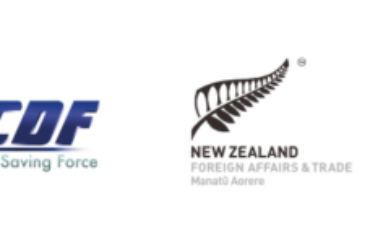
UNITED NATIONS
DISASTER ASSESSMENT AND COORDINATION (UNDAC) – INDUCTION COURSE
The United Nations Disaster Assessment and Coordination (UNDAC) is part of the international emergency response system, designed to help the United Nations and governments of disaster-affected countries during the first phase of a sudden-onset emergency. The UNDAC Induction Course forms a series of pre-induction webinars, followed by a 2-week intensive training course, which initiates members to the concept and methodology of UNDAC’s response work. Upon successful completion, new members will be placed on the UNDAC emergency roster, and are expected to make themselves available at least 2-3 times a year for emergency missions.
UNDAC is a global counterpart of the ASEAN Emergency Response and Assessment Team (ERAT), with its own mandates of assessment, coordination and information management fitting well with the ASEAN-ERAT design. From 14-26 July 2019, the Indonesian National Disaster Management Authority (NDMA) – Badan Nasional Penanggulangan Bencana (BNPB) – hosted the latest UNDAC Global Induction Course at the Ina-DRTG Training Facility in Sentul, Bogor. This training, organised by the Emergency Response Support Branch of the United Nations Office for the Coordination of Humanitarian Affairs (UN OCHA), in collaboration with the BNPB, is the second time Indonesia has hosted the event since 2014. The workshop engaged 30 humanitarian professionals from numerous organisations from more than 15 countries, and included a number of staff from the AHA Centre, as well as the ASEAN-ERAT members from the ASEAN countries. The course itself was conducted by more than 20 facilitators, made-up of professionals from organisations such as UN OCHA, UNDAC, ACAPS, MapAction, Télécoms Sans Frontières (TSF), International Humanitarian Partnership (IHP), and the AHA Centre.
The AHA Centre staff engaged in the training included Lawrence Anthony Dimailig (Assistant Director for Disaster Monitoring & Analysis) and Grace Endina (Preparedness & Response Officer), with both members identifying practices from the course that – if modified to suit the region’s context – could be applicable and valuable for ASEAN’s own ASEAN-ERAT Induction Course. Alongside this, the staff highlighted that learning the UNDAC methodology helps increase their understanding of how the UNDAC works, and supporting the strengthening of common understanding that will contribute towards better interoperability between the organisations when working together within the region.
Additionally, the course was also attended by 5 current ASEAN-ERAT members from Lao PDR, Malaysia, Philippines, and Viet Nam. This also supports increasing the interoperability between UNDAC and ASEAN-ERAT and broadens understanding and context for those members engaged.
These themes formed the core of the AHA Centre’s key outcomes and benefits from their engagement in the UNDAC Induction Course. The engagement supports better interoperability between ASEAN-ERAT and UNDAC during large-scale emergency responses within the region, and the intensive training with hands-on exercises providing an appreciation as to how UNDAC tools work during emergency response. Increased understanding on these global mechanisms will benefit ASEAN-ERAT members, as well as NDMO officials, regarding synergies between national, regional and global mechanisms in order to increase a coordinated response in times of crisis. The engagement also supports the AHA Centre’s work towards realising the goal of ASEAN X.0 within the One ASEAN, One Response vision. Within this goal, ASEAN-ERAT and AHA Centre staff are envisioned to support the work of UNDAC during large-scale emergency responses outside of the ASEAN region itself. The course formed a platform for the ASEAN region and the AHA Centre to promote its regional mechanisms in a global environment, and to draw upon experiences responding alongside the United Nations – in particular during the 2018 Central Sulawesi Earthquake and Tsunami response.
Written by : Lawrence Anthony Dimailig | Photo : AHA Centre




